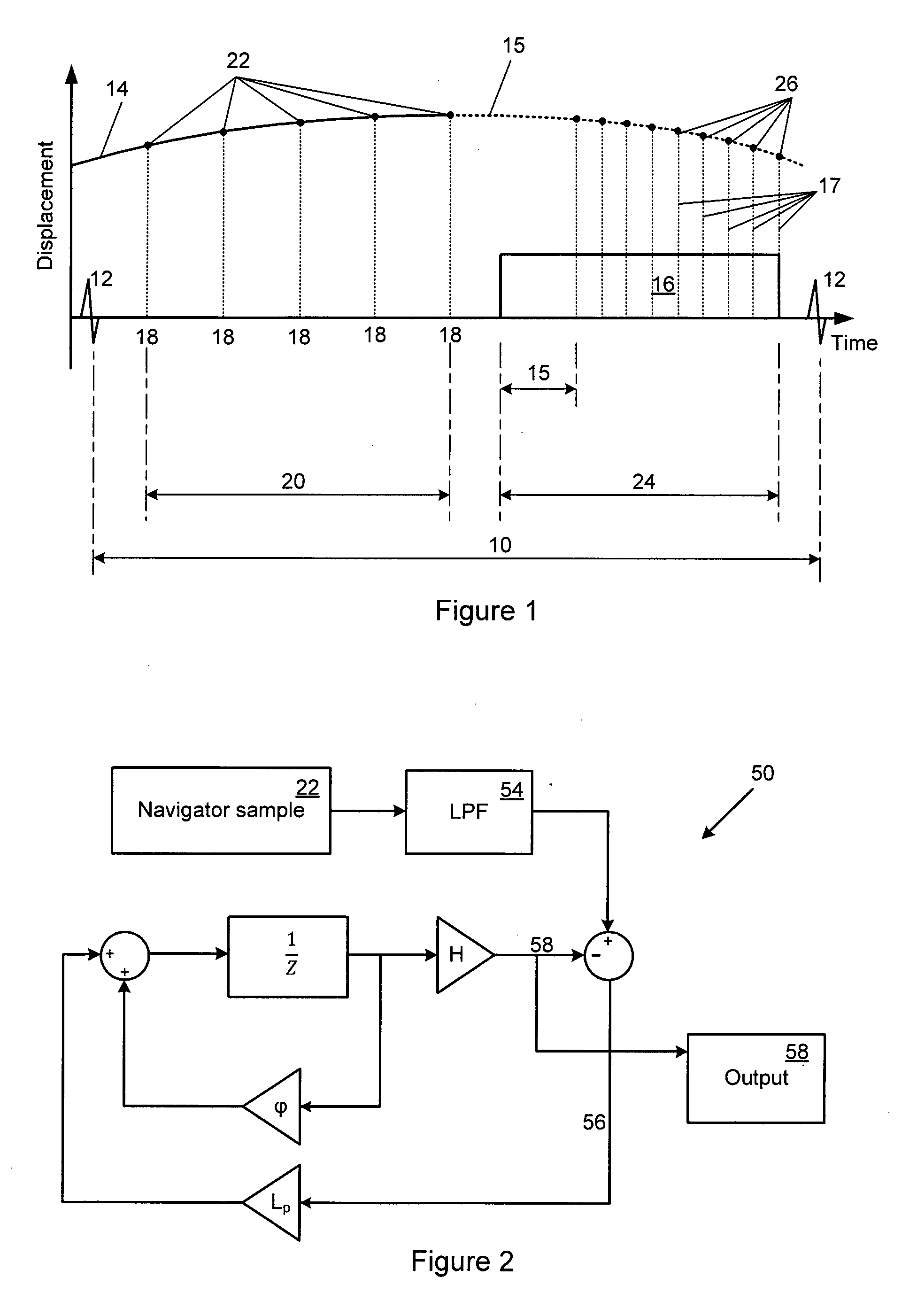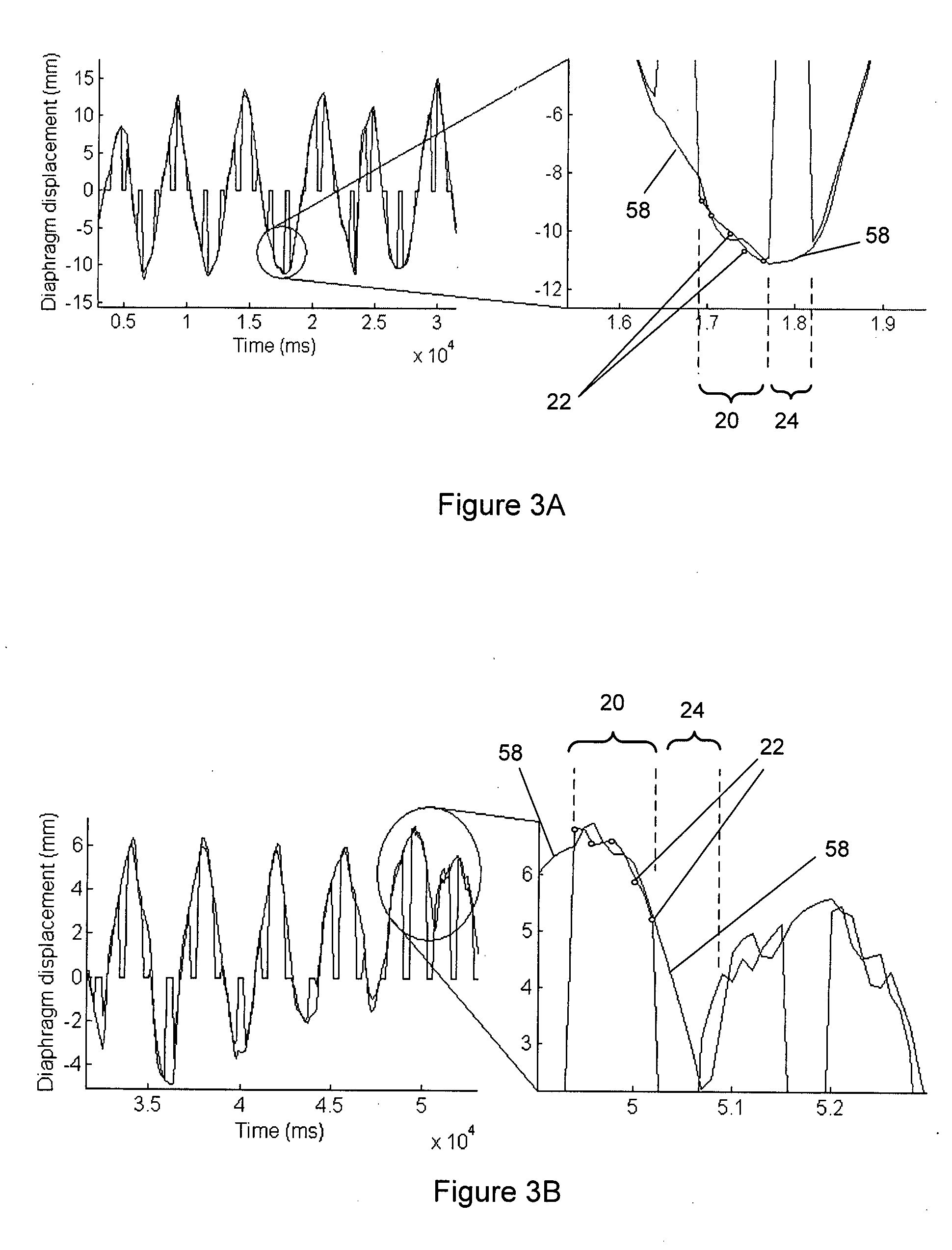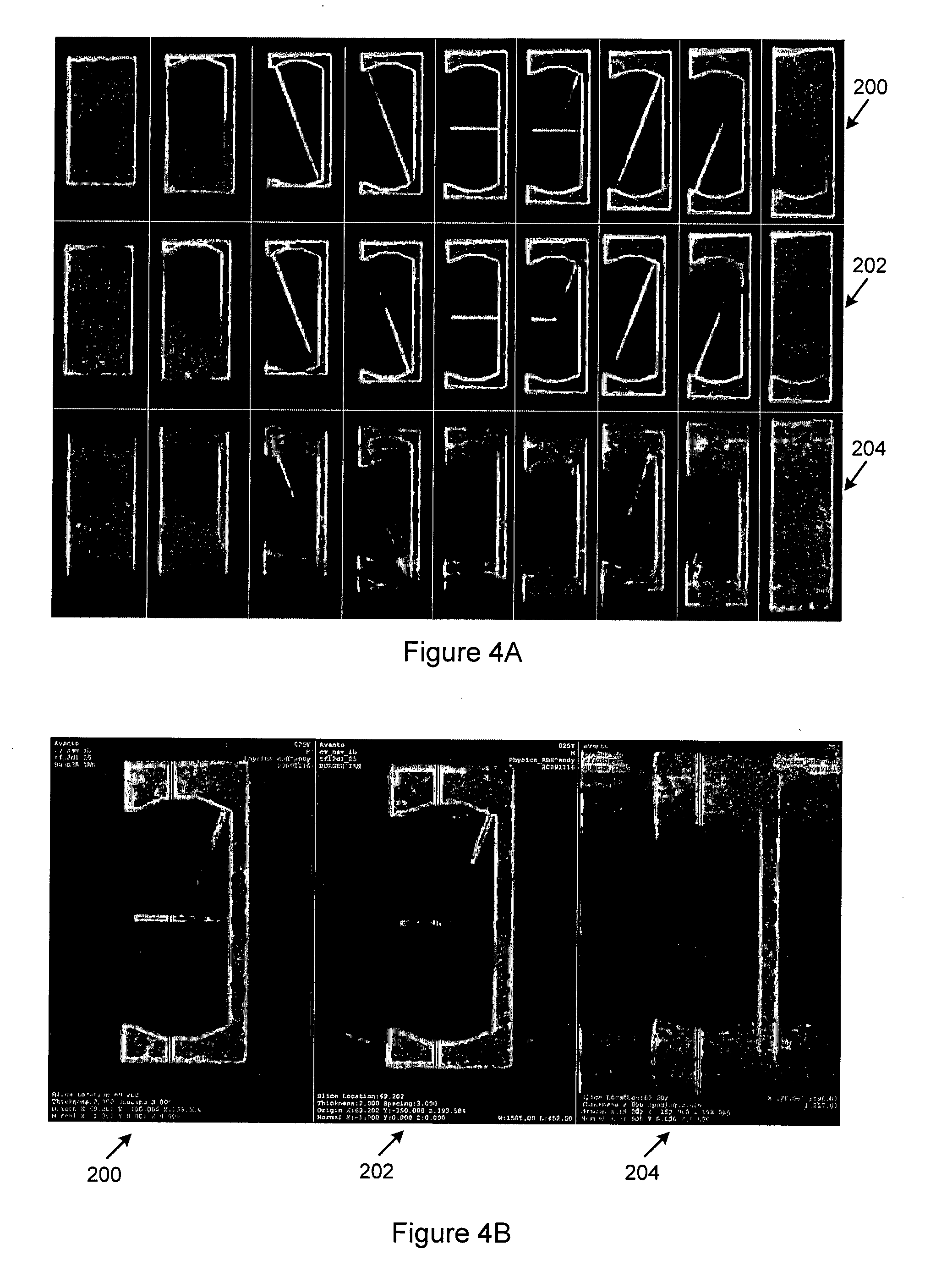Method for Compensating for Respiratory Motion in Magnetic Resonance Imaging
a magnetic resonance imaging and respiratory motion technology, applied in the field of motion compensation in magnetic resonance imaging, can solve the problems of imposing a limit on the speed at which imaging can take place, requiring appreciably more time to obtain a high resolution mr image of the heart, and a particular problem of respiration-induced motion of the hear
- Summary
- Abstract
- Description
- Claims
- Application Information
AI Technical Summary
Benefits of technology
Problems solved by technology
Method used
Image
Examples
Embodiment Construction
[0049]FIG. 1 is a graph illustrating a method for compensating for respiration-induced motion of a subject's heart as it is imaged by a magnetic resonance (MR) scanner. The horizontal axis represents time and the graph is shown over one cardiac cycle (10) which spans a pair of consecutive heartbeats (12). The vertical axis represents the displacement of the subject's heart that occurs due to the subject breathing.
[0050]Image preparation and acquisition by the MR scanner is done during a segment (16) which is gated by an ECG trigger signal which detects the heartbeats (12) so as to occur at the same time during consecutive cardiac cycles. For a healthy subject with a resting heart rate of about 70 beats per minutes, the imaging segment (16) can be about 200 ms long, which includes a scanner preparation period (15) followed by an imaging sequence during which about 25 image projection views or lines (17) can be obtained during the single cardiac cycle.
[0051]The movement of the subject...
PUM
 Login to View More
Login to View More Abstract
Description
Claims
Application Information
 Login to View More
Login to View More - R&D
- Intellectual Property
- Life Sciences
- Materials
- Tech Scout
- Unparalleled Data Quality
- Higher Quality Content
- 60% Fewer Hallucinations
Browse by: Latest US Patents, China's latest patents, Technical Efficacy Thesaurus, Application Domain, Technology Topic, Popular Technical Reports.
© 2025 PatSnap. All rights reserved.Legal|Privacy policy|Modern Slavery Act Transparency Statement|Sitemap|About US| Contact US: help@patsnap.com



